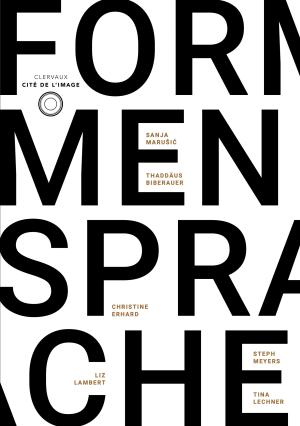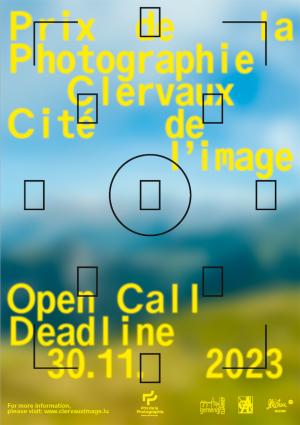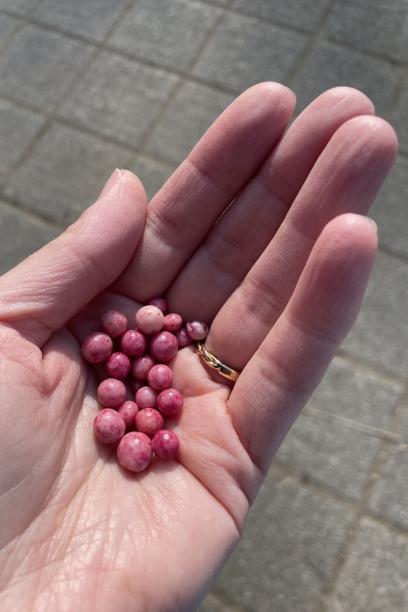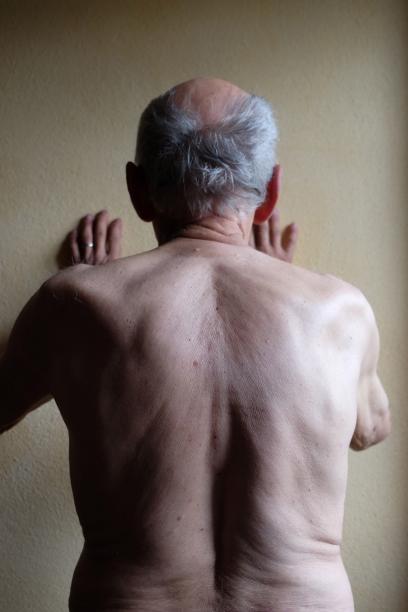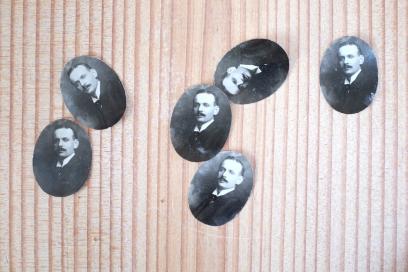FRAGMENTS D’INDICES (2024)
A portrait is always soluble in transmission. And to portray oneself is to convey something of one's personality, an exercise that is often elusive due to the inability of the ‘self’ to say everything - echoing Rimbaud's famous quote, ‘I is another’. At the same time, what shapes us is often a family narrative, and it is this story that Neckel Scholtus conveys in her attempt at self-portraiture.
Neckel revisits the genre in the form of a visual charade, scattering clues, shapes and colours that, through associations or breaks, come and go between metaphors and ellipses, ultimately composing the ‘picture’ behind which the artist hides and reveals himself at the same time.
In fact, since the ‘picture’ - a mosaic of eight photos - is a charade, my first clue is a hand, a palm laden with pink berries, and my last is a bust, that of the photographer, captured with a sidelong glance, not lost but turned towards what constitutes her enigma, her hair smoothed back, mouth pursed, tie askew, a very Rimbaudian pose, driven by a need for recognition, infused with intimacy and introspection, but also with that trait that belongs to her and that soothes everything: humour.
So there you have it, the Scholtus charade is a unique gaze, a poetic and tenderly mischievous transgression of portrait conventions. And what does this charade tell us?
The relationship with nature, fragile beauty, and with the earth, both childhood territory and family heritage. It all begins with a bodily element, the hand, symbol of giving. With its small berries, pink like the wall of the paternal farm, round like the metal wire suspended in a knot on the same wall, like the medallions which, arranged in a sort of constellation of pebbles, duplicate the portrait of the great-grandfather, in black and white, this, by analogy with the muted chiaroscuro of the place where the flour is sifted, which refers to peasant labour, with a close-up of another part of the body, the feet, planted in the nourishing earth, in this case the father's feet, then his back, framed like a land of sweat, also of childbirth and combat, symbolised by two slow worms curled up in the gravel, a curl similar to that of the tie worn by Neckel, the daughter, the woman who became an artist.
Biography
Neckel Scholtus (born Annick Sophie in 1982) lives and works in Luxembourg. She is a photographic artist and studied at the Universities of Montpellier III and Paris 8. In 2009, she conceived the project ‘Le Roulot'ographe’. She develops her artistic projects mainly in collaboration with the public, particularly through residencies, but also as a freelance art educator in cultural institutions. Since 2010, she has had the status of an independent, professional Luxembourgish artist. Her work has been exhibited in France, Luxembourg, China, Germany, Switzerland, Sweden, Bulgaria, Ivory Coast and Italy.

